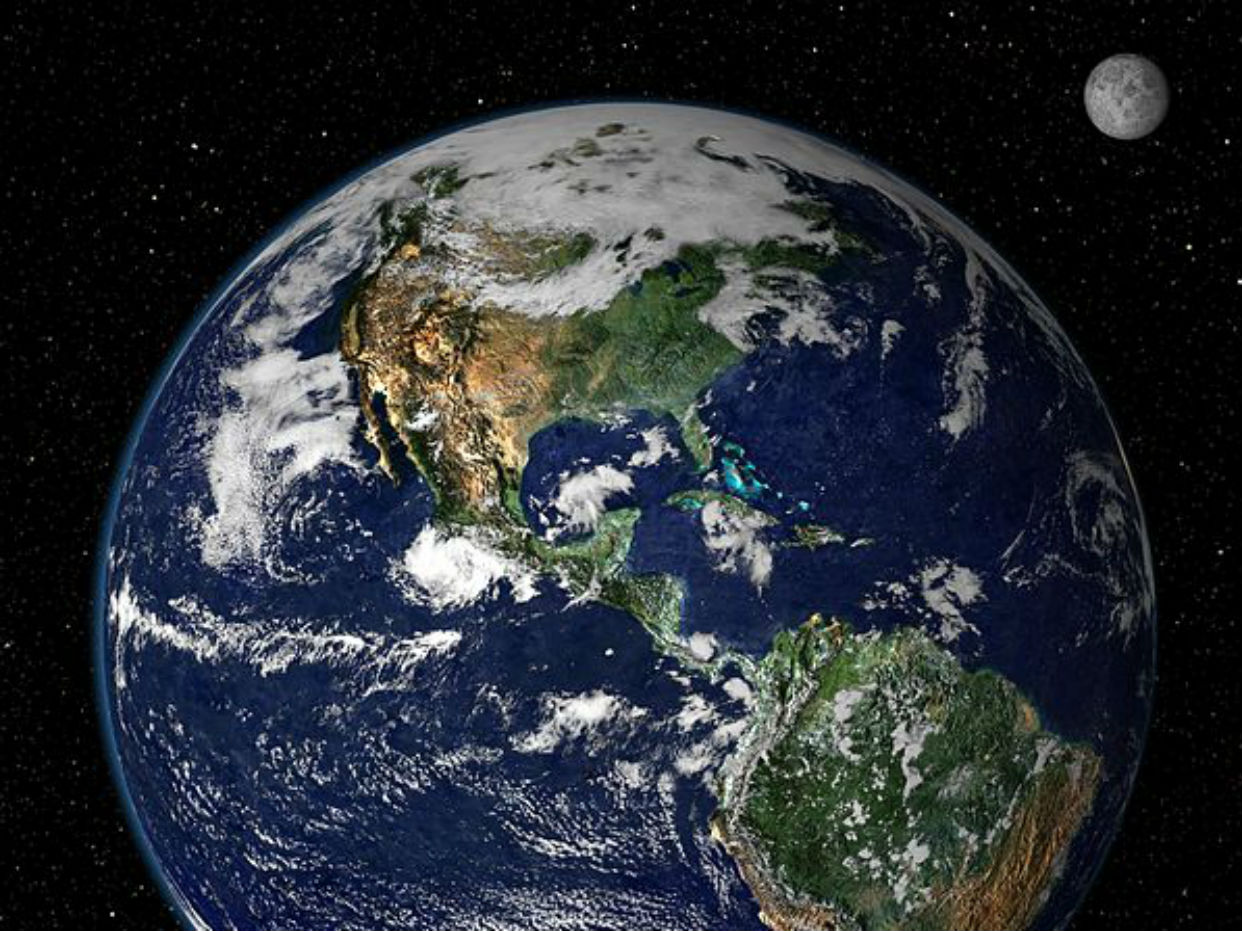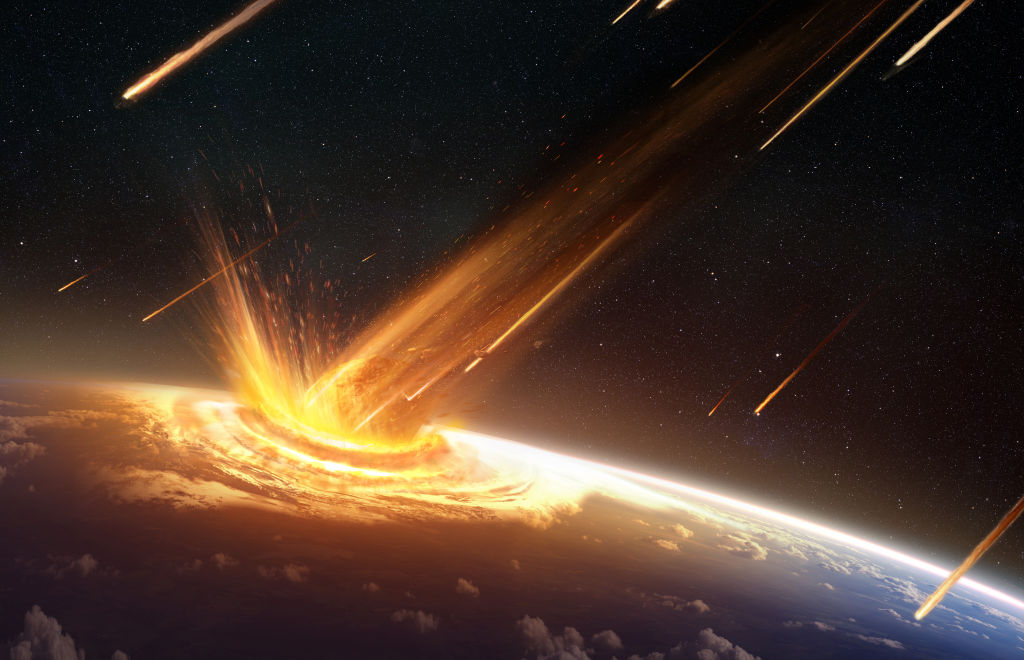Let science fiction be weird again
The genre has become technically accomplished, deeply serious, and utterly boring


When politics or the economy don't give much reason to celebrate, Americans turn to the screen. The 1930s demanded effervescent spectacles that kept us laughing through the Depression. The 1970s yielded a new kind of thriller that mirrored the paranoia of the post-Vietnam era. Recent decades have seen an explosion of science fiction and fantasy. With the audiences for adult drama shrinking, superheroes, spaceships, and monsters rule.
That shift helps explain the buzz about two releases this fall. Dune is the first installment of a third attempt at Frank Herbert's classic novel, which has already been filmed once as a feature and once as a TV miniseries. The Matrix Resurrections is the fourth installment in a franchise that helped kick off the trend.
There's a problem, though: Both films look terrible. It's not entirely fair to judge by previews, but the directors' other work suggests they'll be technically accomplished, crushingly loud, deeply serious, and utterly boring.
The Week
Escape your echo chamber. Get the facts behind the news, plus analysis from multiple perspectives.

Sign up for The Week's Free Newsletters
From our morning news briefing to a weekly Good News Newsletter, get the best of The Week delivered directly to your inbox.
From our morning news briefing to a weekly Good News Newsletter, get the best of The Week delivered directly to your inbox.
The material isn't the issue. Often derided as kids' stuff, imaginative genres help us think through situations and aesthetics that would otherwise seem ludicrous. Like musicals, another genre that's enjoyed a recent renaissance, science fiction is not bound by the laws of physics or logic. That's a realm worth exploring, rather than dismissing.
Instead, the problem lies in the transformation of science fiction and its cousins into the kind of seamless confection they were once pitted against. Once the genre where anything could happen, science fiction now tends to the high budget, high technique, and infinitesimally low risk. The result has all the defects of the genre, including flat characterization and absurd dialogue, with few of the rewards.
In the 1960s, critic Manny Farber described the tension through a contrast between "white elephant" and "termite" art. The "white elephant" represents coherence. Every image, sound, and performance is supposed to fit, producing a work comparable to the 19th century masterpieces of European painting and literature. It's easy to find these qualities in middlebrow prestige dramas. But Farber also found them in the period's fashionable auteurs, such as Francois Truffaut, whose superficially unconventional style concealed a mania for order.
Termite art evades this sort of control. Whether because it's produced cheaply, the actors are cashing in, or the challenges exceed the director's technical abilities, ""Termite-tapeworm-fungus-moss art," Farber explained, "goes always forward eating its own boundaries, and, like as not, leaves nothing in its path other than the signs of eager, industrious, unkempt activity." As the name suggests, termite art is always at risk of collapse under its own weight.
A free daily email with the biggest news stories of the day – and the best features from TheWeek.com
Farber's defense of the chaotic, incompetent, and offbeat was part of the then-controversial appreciation for B-movies and genres film that he shared with critics like Pauline Kael. But it also explains the way economic and technological change have sucked the life out of genres where termites once flourished.
Take the new Dune. Directed by Denis Villeneuve, who's led a string of acclaimed SF and fantasy production, it's something of a do-over from David Lynch's 1984 version. While the producers expected a rival to Star Wars, Lynch turned in an epic of weirdness that combined elements of Alejandro Jodorowsky's failed production a decade early with Lynch's own distinctive vision. Released in an expurgated version the director disavowed, the film was both an economic and critical disaster.
Longer cuts released later fix some of the problems in exposition and structure. Even without these changes, though, Lynch's Dune is an unintentional masterpiece of termite art. Much of the cast seems not to understand the meaning of their lines — or even what movie they're in. That's perfect, though, for a film that's partly about the boundary between reality and dreams — a boundary blurred by the characters copious consumption of hallucinogenic "spice." Like other Lynch films, Dune works better as an experience than a story.
Lynch also created an aesthetic that increases the audience's discomfort (in a good way). The sets, costumes, and makeup effects for mutated characters were unusual in their ability to convince the audience that action occurs in a world not our own. That includes departures from the source material, which angered some fans. In Lynch's versions, the evil Harkonnen clan appears to subsist on bloodlike purple juice that flows through the veins of their minions. It's not in the source material, among other departures that angered fans. Who cares — it's delightfully bizarre.
At least in trailers, the new Dune promises none of these qualities. Monumental, gritty, and obsessively faithful to Herbert's byzantine plot, it's the coherent synthesis of form and matter Lynch couldn't deliver. For just that reason, though, it has little to offer anyone who's not already attached to the premise. Early reviews express disappointment in this "lifeless spice opera" on a "comically massive scale."
The Matrix, on the other hand, has always been white elephant art. The 1999 original was applauded for a premise borrowed from dorm room philosophy and a slick look influenced by video games and Hong Kong action films. Those very qualities, though, left it airless, as every scene and shot was stylized into something approaching abstraction.
Lynch's Dune can be compared to termites trying to chew their way out of the imposing but flimsy structures that contain them. Watching The Matrix is like being drawn into a sensory deprivation chamber. That is not inconsistent with the gnostic conceit that drives the plot, but create an exhausting yet paradoxically forgettable experience. The most memorable element is Hugo Weaving's termite performance as Agent Smith, one of the only hints of humor in the otherwise dreary enterprse.
Directors are not entirely to blame for burgeoning white elephant tendencies, which are exacerbated by expectation of endless sequels and spinoffs. In addition to huge budgets that make it harder to justify creative experiments, technological improvements offer a level of aesthetic control that evaded past filmmakers. The defects of write elephant art, Farber argues, are attempts to "1) frame the action with an overall pattern, 2) install every event, character, situation in a frieze of continuities, and 3) treat every inch of the screen ... as a potential area for prizewinning creativity." In addition to the economic incentives to build a franchise, green screens, digital footage, and postproduction manipulation make these sins hard to resist.
But awesome shots, A-list casts, and cohesive artistic vision come at the expense of discomfiting qualities that once lent science fiction unlikely power. In Lipstick Traces, a volume best described as a spiritual history of punk rock, critic Greil Marcus mines pop culture ephemera for hints of the disorder and violence lurking beneath the surface of modern life. Among other examples, he unearths Quatermass and the Pit (released in the U.S. as Five Million Years to Earth), a 1967 British movie that has something to do with Martians who colonized Earth in the distant past. He describes watching with genuine horror as the plot culminates in sheer, uncontrollable anarchy that evades both the narrative and technical limits of the low-budget production.
Moments like this, where the stuffing of the film bursts out of own constraints, revealing more than its creators ever intended, are rare in today's technically accomplished, deeply serious, and utterly boring spectacles. The termites survive in duds, bombs, and forgotten one-offs like Dark City (1998), which combines elements that prefigure The Matrix with themes from Five Million Years to Earth. The great exception is the unexpectedly superb Mad Max: Fury Road (2015), which managed to preserve the gonzo energy of its predecessor from the white elephant temptations of modern budget and technology. Let's hope the forthcoming prequel doesn't ruin that too.
Samuel Goldman is a national correspondent at TheWeek.com. He is also an associate professor of political science at George Washington University, where he is executive director of the John L. Loeb, Jr. Institute for Religious Freedom and director of the Politics & Values Program. He received his Ph.D. from Harvard and was a postdoctoral fellow in Religion, Ethics, & Politics at Princeton University. His books include God's Country: Christian Zionism in America (University of Pennsylvania Press, 2018) and After Nationalism (University of Pennsylvania Press, 2021). In addition to academic research, Goldman's writing has appeared in The New York Times, The Wall Street Journal, and many other publications.
-
 The world's best astrotourism adventures
The world's best astrotourism adventuresThe Week Recommends From the depths of the Namib Desert to Finnish Lapland, these remote destinations are ideal for stargazing
-
 The week's good news: Oct. 12, 2023
The week's good news: Oct. 12, 2023It wasn't all bad!
-
 The week's good news: Sept. 28, 2023
The week's good news: Sept. 28, 2023It wasn't all bad!
-
 Two-hours flights from London to Sydney via space
Two-hours flights from London to Sydney via spacefeature And other stories from the stranger side of life
-
 Michelin-star dining on edge of space ‘within months’
Michelin-star dining on edge of space ‘within months’feature And other stories from the stranger side of life
-
 Is Don’t Look Up realistic?
Is Don’t Look Up realistic?feature How experts are dealing with the real-life threat posed by asteroids heading to Earth
-
 Jimmy Kimmel, Trevor Noah, and Jimmy Fallon critique William Shatner's space trek, sans sexy 'green women'
Jimmy Kimmel, Trevor Noah, and Jimmy Fallon critique William Shatner's space trek, sans sexy 'green women'Speed Read
-
 Late night hosts mock Jeff Bezos, his space cowboy hat, and his extremely phallic rocket
Late night hosts mock Jeff Bezos, his space cowboy hat, and his extremely phallic rocketSpeed Read



